On one side of the street, under the Reserve Bank, they used to store gold bullion, but on the other side, under the Treasury building, is a spare Parliament.
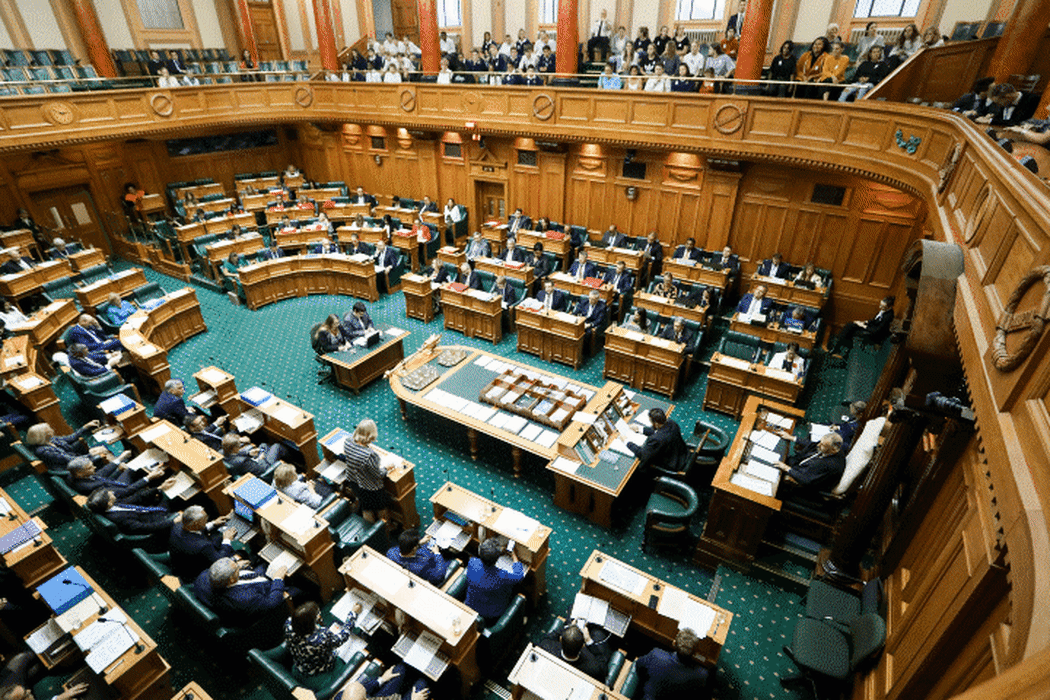
Photo: VNP
Parliament's regular debating chamber that serves as a familiar backdrop to MPs is checked regularly by security to make sure it's safe.
But just in case something goes wrong there's a spare debating chamber ready to go at a moment's notice.
Well, actually a few moments, but only a few. The alternate debating chamber can be set-up in under two hours but while most people have never walked among the green chairs of the regular chamber, many may have already been in the secret chamber without knowing - inside Select Committee Rooms 1 & 2.
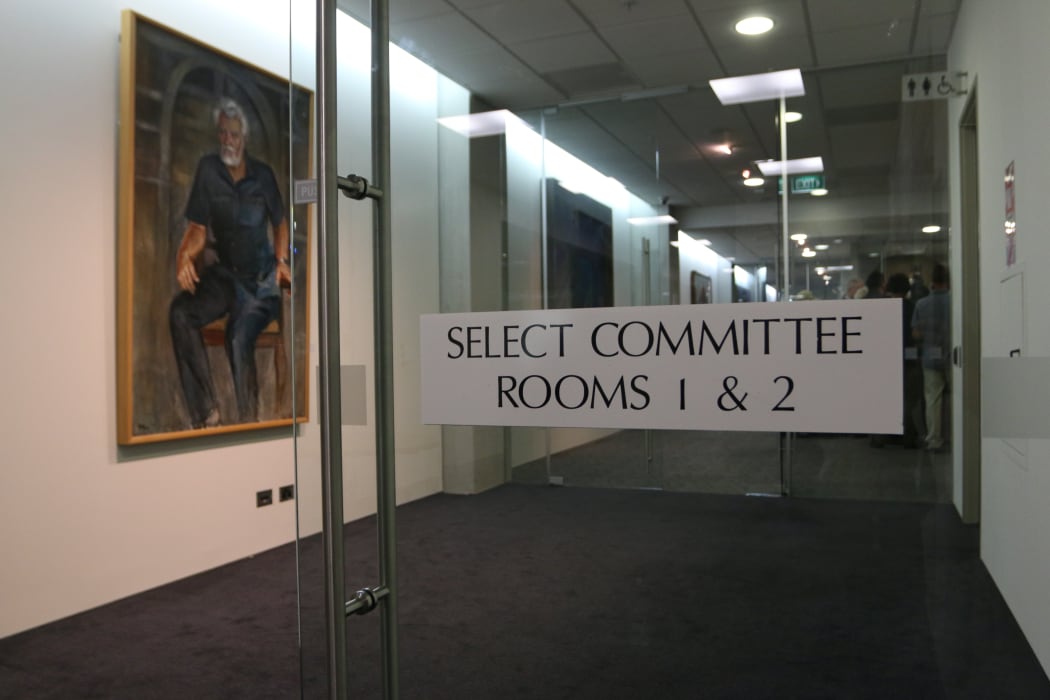
There are two select committee rooms behind Bowen House in downtown Wellington, but technically they're in a basement underneath the Treasury. Photo: RNZ / Daniela Maoate-Cox
The excitingly named committee rooms tucked in behind Bowen House, are spacious and airy because they were built to be joined together and repurposed, and if necessary replace the debating chamber where Parliament usually meets.
Why? Because a Parliament with nowhere to meet is just an equivocation of MPs (and that's the most generous of the collective nouns for politicians). In an emergency you might want them to assemble into something more useful.
But a quick switcheroo requires practice. Ask Wonder Woman. So the quick change from committee room to debating is made periodically to keep it smooth.
There's 120 odd MP plus other staff who regularly work in the chamber including the clerks, Hansard team (transcribers) and chamber support officers, so making sure the temporary chamber is set up for all of them is a coordinated effort.
"We have our colleagues from an organisation called SoundTech, we have our colleagues from security who all come in, everyone pitches in to take down the equipment as quickly as we can, moved out of the way, new chairs in their place," said James Picker, who manages the select committee clerks who were much of the muscle in the rehearsal.
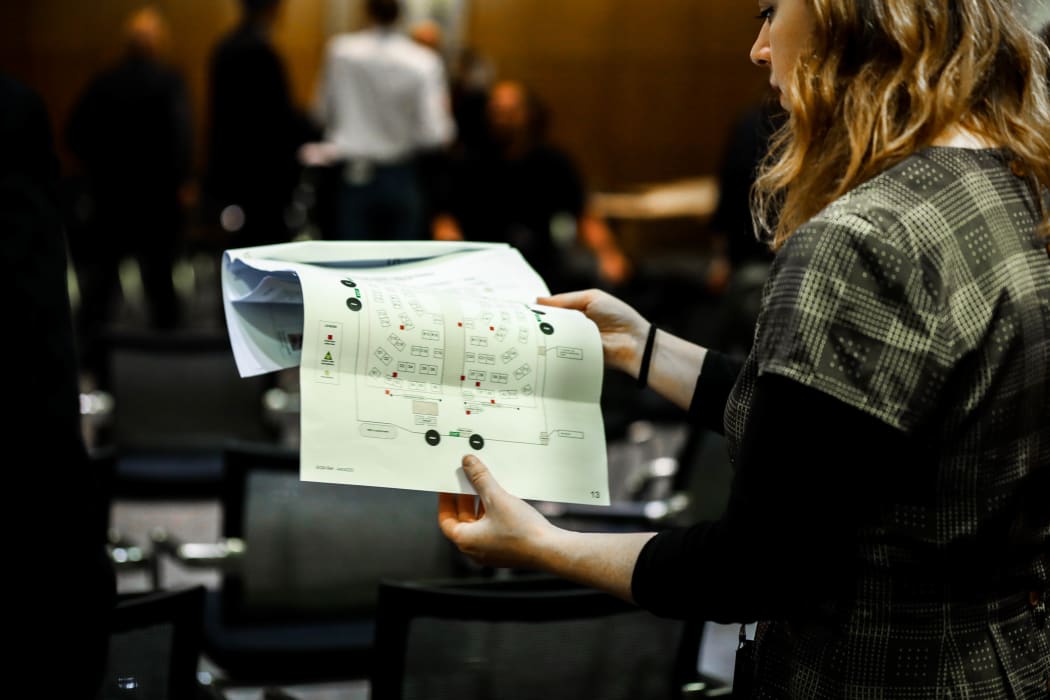
Setting up the alternate chamber means checking the layout a lot. Photo: VNP / Daniela Maoate-Cox
Walls have to be pushed aside, tables folded up and wheeled out; microphones, screens, and chairs pushed out and rearranged into the familiar U-shape of the regular debating chamber.
"We're going to pack down all the committee tables and then going to start to recongifure it for the alternative chamber said the Office of the Clerk's Greg Cotmore, whose role includes business continuity, and who was running the rehearsal.
"They'll use some of the furniture for replicating The Table in the debating chamber, the Speaker's podium and the clerks' table,"
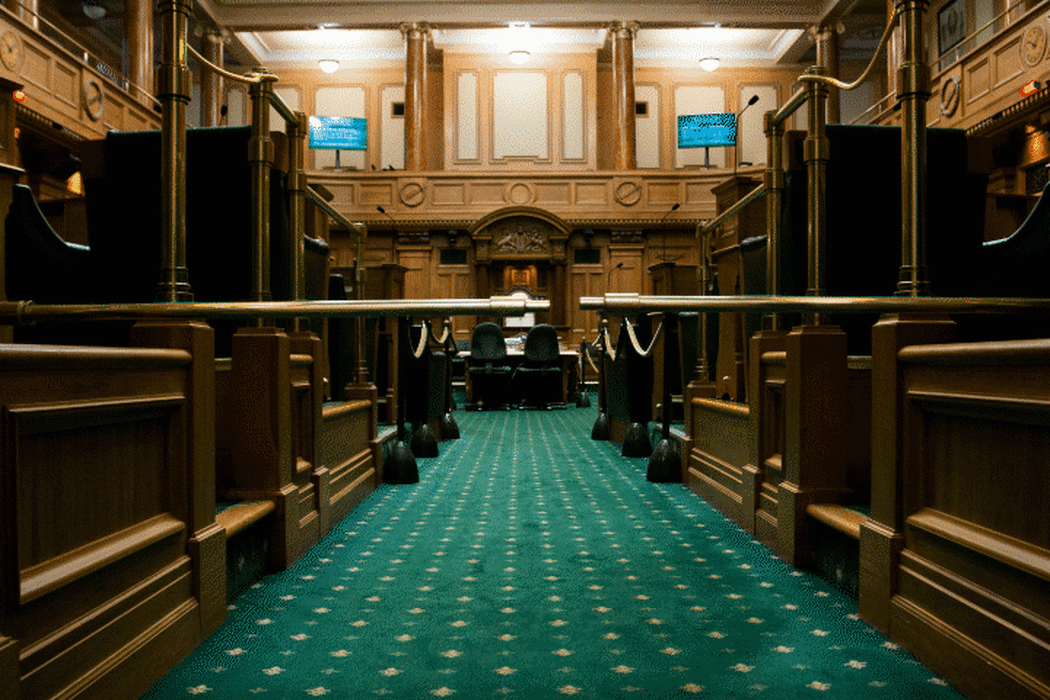
The brass Bar isn't often drawn across the main entrance to the regular chamber but it's there to mark where 'strangers' must stop (including new MPs waiting to be called into the House). Non-MPs (other than Chamber staff) are not allowed onto the floor of the Chamber and are called 'strangers'. Photo: VNP / Daniela Maoate-Cox
In the center of the regular chamber is a table for two people who often wander in and out while MPs are talking. Those seats belong to Hansard, the team of people who transcribe what is said in the House but in the alternative chamber space is tight, so Hansard is moved to the back.
"New Zealand Hansard editors are quite privileged in their position," said Hansard editor Hayley Locke, "most other Hansard editors don't get to sit in the middle of the chamber, they sit either in the galleries or back here if they're very lucky."
In the regular chamber each chair has its own microphone but MPs will get more of a work-out in this alternative chamber.
"There are podiums because we aren't able to provide individual microphones," said Serjeant-at-Arms Steve Streefkerk. "In this instance when a Member gets the call they'll have to come up to one of the podiums to speak."
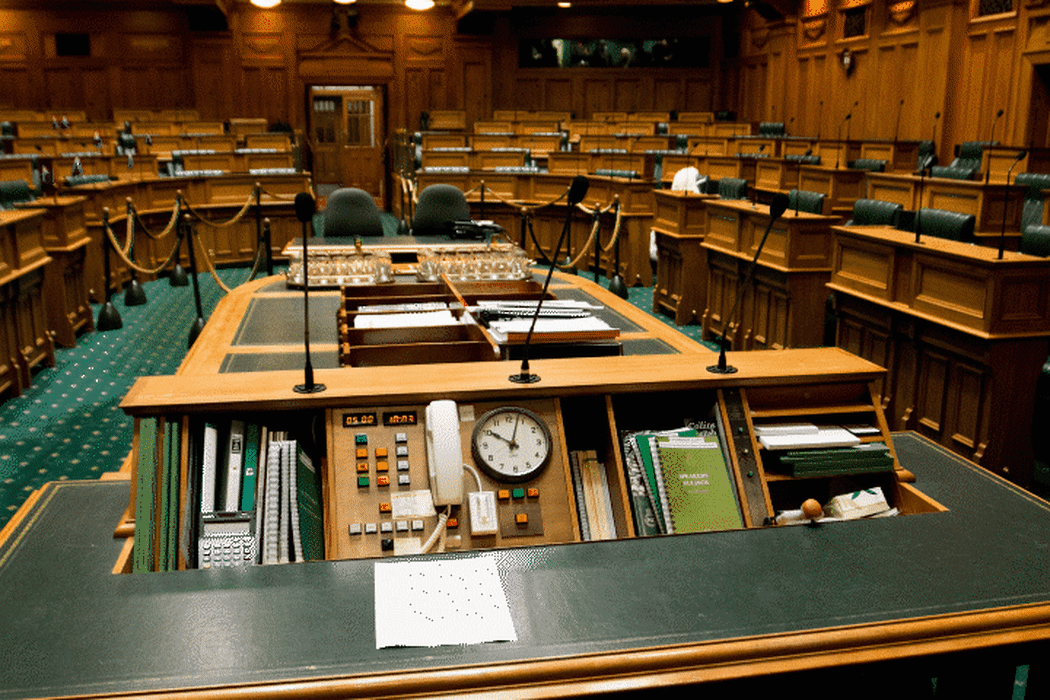
The view from the clerks' table in both chambers. Photo: VNP / Daniela Maoate-Cox
It all looks very different but for the public listening to proceedings it won't sound much altered.
"There's an awful lot of network cable that runs everywhere, technically it's not that difficult [to make the change-over]," said Eric Waghorn from SoundTech. "Theoretically for the Members it will look different but broadcast-wise there should be no difference."
Two hours was allowed for the practice set-up but the actual time taken was much shorter.
"We had it broken down and rearranged in about 40 minutes and then there's the finessing, it's still way under the two hour period we were given, so it's a success," said Mr Cotmore.
The alternative chamber was set-up for a week for staff to inspect but will be turned back into select committee rooms before Parliament sits again.


